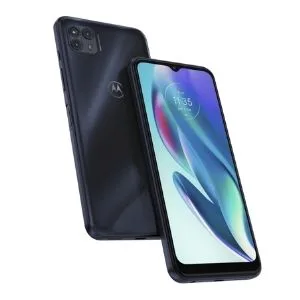Motorola Moto G50 5G review: Cheap, but is that enough?
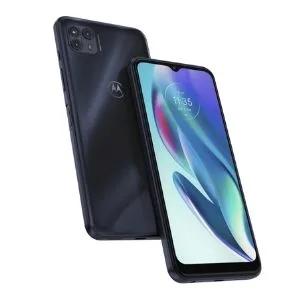
-
- Battery Score
3.5
- Camera Score
3
- Design Score
3
- Performance Score
3.5
- Battery Score
3.5
Summary
Quick verdict: The Motorola Moto G50 5G continues Motorola’s commitment to decent, low-cost phones, but it’s outpaced by the 5G competition in its price bracket.
- 5G ready
- 90Hz display
- Low cost
- Average performance, even for its price
- Average cameras
- Simple design
Details
Pricing & Availability
| RRP | $399 |
| Launch date | 08/2021 |
Motorola's G series phones have long been the company's primary phone line in Australia. Motorola has dabbled in devices like the foldable Razr line, but budget is where its heart has been, as far as local phones go. The Motorola Moto G50 5G would appear to continue that journey, but instead sits in an odd place in Motorola's line-up.
This is because it's also launching in the same timeframe as a range of mid-range phones with Edge branding. The Motorola Moto G50 5G retails at $399, $100 lower than the entry level Motorola Edge 20 Fusion. Sure, you'll save money, but you're unfortunately getting a much lesser quality handset in return.
Design: Not the flashiest low-cost 5G option
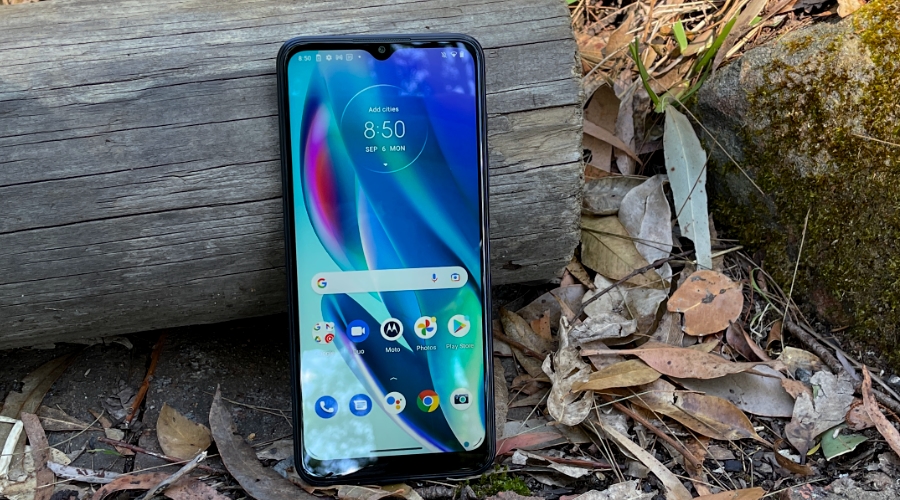
Image: Alex Kidman/Finder
The Motorola Moto G50 5G is, like so many other Moto G phones, a functionally designed phone more than a particularly pretty one. That's not necessarily bad, as there's definitely a place in the market for functional, affordable devices.
The Motorola Moto G50 5G sells in Australia in just the 1 colour, "Meteorite Grey". I'm not sure I'd call the rear colour on the Motorola Moto G50 5G actually grey in a perceptible way, because this is your classic black-bodied plastic phone. In some light, it'll appear blue, and if you take it out of its supplied protective case, it'll reflect nicely while also showing off every single one of your fingerprints.
You do get that familiar Motorola "Batwing" logo on the back, but where on previous Moto G series phones, it's done double duty as a fingerprint reader, this time around it's just a flat logo.
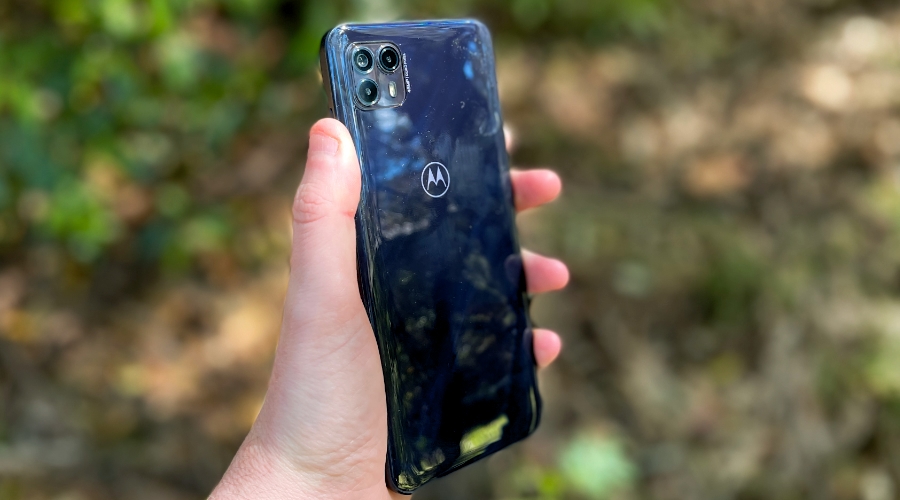
Image: Alex Kidman/Finder
That's because, like so many other 2021 phones, the Motorola Moto G50 5G places its fingerprint reader in the side mounted power button. It sits just below the volume rocker and a dedicated Google Assistant button. I'm not a huge fan of dedicated assistant buttons, but at least the placement here is smart, because you're less likely to tap it accidentally thinking it's the power button.
The Motorola Moto G50 5G features a 6.5 inch IPS LCD with an HD+ (1600x720) pixel resolution, which is par for the course in budget phones right now. What's less common is a higher refresh rate display.
With the Moto G50 5G, you can opt for 60Hz to save battery life or pump it up to 90Hz for smoother animations and web page scrolling. Alternatively, you can opt for the auto setting that tries to intelligently scale refresh rates to maximise battery life and deliver pleasing visuals. A lot of high refresh rate phones simply give you 60Hz or auto.
The Motorola Moto G50 5G measures in at 167 x 76.4 x 9.26mm, making it nearly identical in size to the Motorola Moto G5G Plus. It's cheaper than the G5G Plus was at launch, but that's very much reflected in its design and build.
Moto G50 Camera: 48MP sensor has to do a lot of heavy lifting
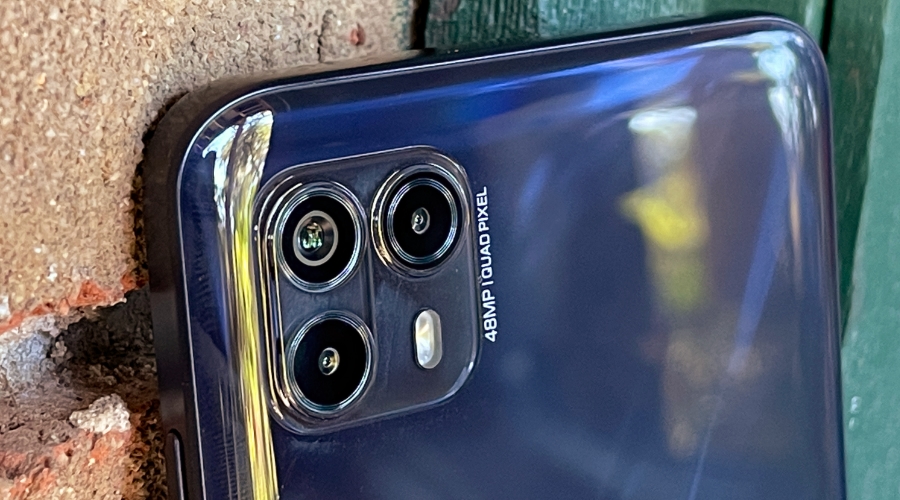
Image: Alex Kidman/Finder
Motorola doesn't have a particularly strong history in providing exceptional phone camera hardware, especially for its G series phones. That being said, I was more impressed with the G5G Plus than I expected.
Motorola's toned down its recipe for the Motorola Moto G50 5G's camera, however. Its star attraction is a 48MP rear primary sensor with quad-pixel technology. That's Motorola's way of saying it's primarily using pixel binning to deliver 12MP shots with larger pixel sites by default, although you can opt to shoot actual 48MP photos if you must.
That 48MP sensor has to do all the really worthwhile heavy lifting at the rear. There are 2 other lenses, but 1 is the typically mediocre 2MP Macro lens that everyone has, and the other is a 2MP depth sensor that you never shoot with anyway.
That means that Motorola's also using heavy cropping on the Motorola Moto G50 5G in order to give you any level of digital zoom. As expected, the results are rarely all that great.
Here's a simple shot taken with the primary camera with no zoom.

Image: Alex Kidman/Finder
You'd probably want a closer shot of the bird there, right? Here's what you get:

Image: Alex Kidman/Finder
At the front, the same story of average performance continues, with a single 13MP selfie shooter. Motorola surprised me with the Moto G5G Plus throwing in dual sensors for wide group selfie shots, but the closest the Motorola Moto G50 5G can get to that is a panning group selfie mode. The Moto G50 5G does offer a portrait mode, but the AI is seriously lacking when producing any kind of realistic bokeh at all.

Image: Alex Kidman/Finder
I promise you, I haven't photoshopped myself in front of a random backdrop there, but you'd seriously suspect I had, given that photo above.
Camera technology is more than just a numbers game, and while the Motorola Moto G50 5G can produce fair results in everyday conditions, it's again an area where it just doesn't particularly push what we might expect in this price range.
Motorola Moto G50 5G sample photos:

Image: Alex Kidman/Finder

Image: Alex Kidman/Finder

Image: Alex Kidman/Finder

Image: Alex Kidman/Finder

Image: Alex Kidman/Finder

Image: Alex Kidman/Finder

Image: Alex Kidman/Finder

Image: Alex Kidman/Finder

Image: Alex Kidman/Finder
Performance: Decent, but nothing exciting

Image: Alex Kidman/Finder
The Motorola Moto G50 5G runs on the MediaTek Dimensity 700 processor. That's fast becoming the SoC of choice for low-cost 5G phones, in the same way that the Qualcomm Snapdragon 765G was the choice for mid-range 2020 5G handsets.
Motorola matches the Dimensity 700 up with just 4GB of RAM and 128GB of storage, because again this is a handset that's been built to a price point. In 2021, 4GB isn't a lot of RAM, which is noticeable in heavier-use apps that make the Motorola Moto G50 5G struggle.
Pitting it against the range of 5G capable lower-cost handsets, as well as its own competing (but more expensive) Motorola Edge 20 Fusion shows this in action. Here's how it compares using Geekbench 5's CPU test:
Here's how it compares running 3DMark's GPU tests:
The end result is a phone that's certainly app-capable within its price bracket, but never one that particularly impresses in a performance sense. That matches with its utilitarian design, but it's hard to get too enthusiastic about it as a result. Again, with the Edge family to sell, maybe that's the point.The Motorola Moto G50 5G is also 5G capable. Current pandemic conditions made it impossible to perform any wider-scale 5G testing of the Motorola Moto G50 5G, but testing on the Telstra network around the Hornsby area of Sydney saw speed results in the 300-400Mbs down range.
As always, network speeds can be highly variable – and it's quite likely that the same pandemic conditions that limited my 5G testing also means that the overall network load is lower than it might otherwise have been.
Moto G50 Battery: Surprisingly good given the 90Hz display
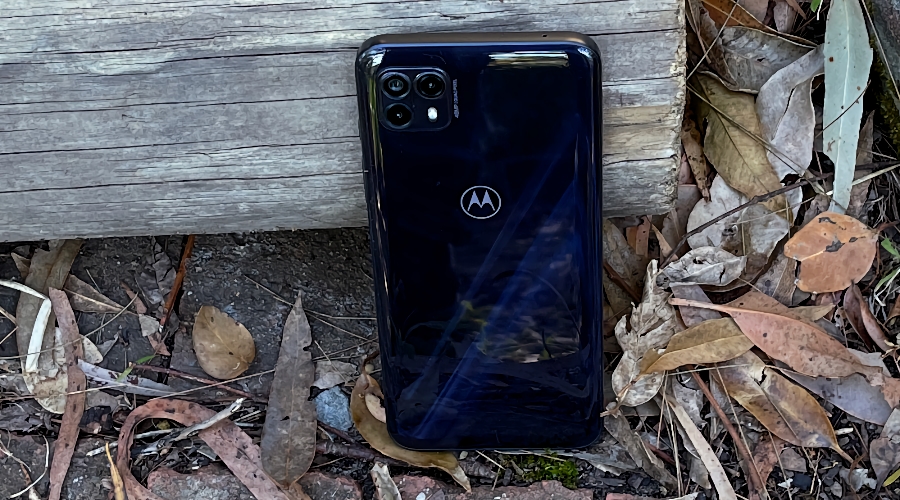
Image: Alex Kidman/Finder
Within the low-cost 5G phone space, there's an astonishing quantity of commonality in terms of battery capacity. Name a low-cost 5G phone, and the odds are good that it'll pack in a 5,000mAh battery.
Have a guess at how much power the Motorola Moto G50 5G has. I'll wait.
The challenge for the Motorola Moto G50 5G is twofold. While it has the same 5,000mAh battery as its contemporaries, it also has to contend with the added power drain of a 90Hz display and the potential higher battery drain of 5G. There's simply nothing that can kill a phone battery faster than heavy 5G usage.
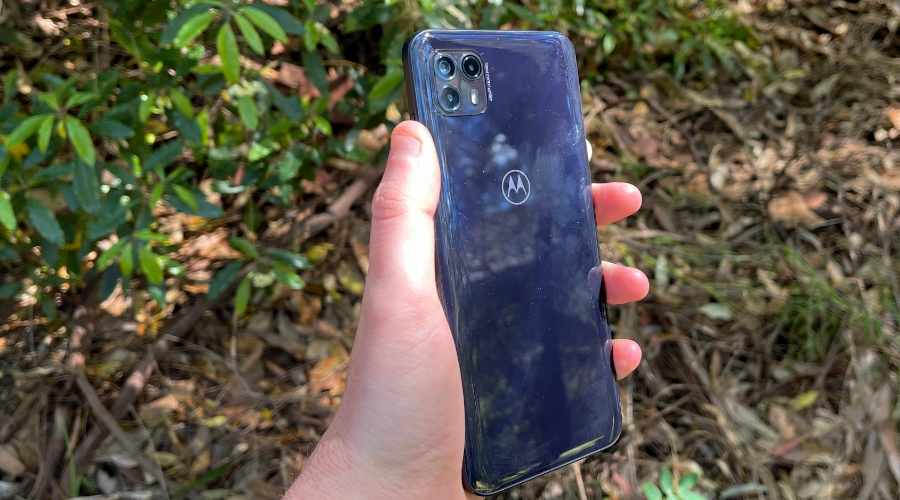
Image: Alex Kidman/Finder
Current pandemic conditions did make it trickier than I'd like to test 5G, but I did run the Motorola Moto G50 5G through Finder's standard battery test, streaming a 1080p YouTube video at maximum brightness for an hour from a fully charged battery.
What we want to see is battery life above 90%, because phones that fall below that line typically fail to last a full day's moderate usage. Here's how the Motorola Moto G50 5G compares with the screen refresh rate set to 90Hz:
That tallies with my anecdotal use of the phone as well. While the Dimensity 700 isn't the most powerful processor, it manages power well over a day's usage. If you weren't leaning on it hard, you could stretch that into a second day without too much work. Although the reverse is also true – punch it heavily with lots of 5G data churning and you'll be reaching for its USB-C power supply before the day is out.
Should you buy the Motorola Moto G50 5G?
- Buy it if you really like Motorola phones and need 5G.
- Don't buy it if you really like Motorola phones and can afford the Edge range.
Where 2020 saw a slew of mid-range phones in the rough $500-$800 price bracket, 2021 has brought us a bevy of sub-$500 5G capable handsets.
As always, 5G isn't reason enough to buy a phone right now. Networks are still rolling out, and more critically, there's not a lot of real-world consumer use cases for those faster connections, especially during a pandemic.
That means that any 5G phone, including the cheap ones, have to impress with the rest of their offering. The Motorola Moto G50 5G doesn't make any terrible missteps, but at the same time it does little to really stand out.
If you're looking for reviews of the other current Motorola phones for comparison, we have tested the regular Motorola Edge 20, the Edge 20 Pro and the and the Edge 20 Fusion.
And if you're after something a bit cheaper we have also tested the Motorola
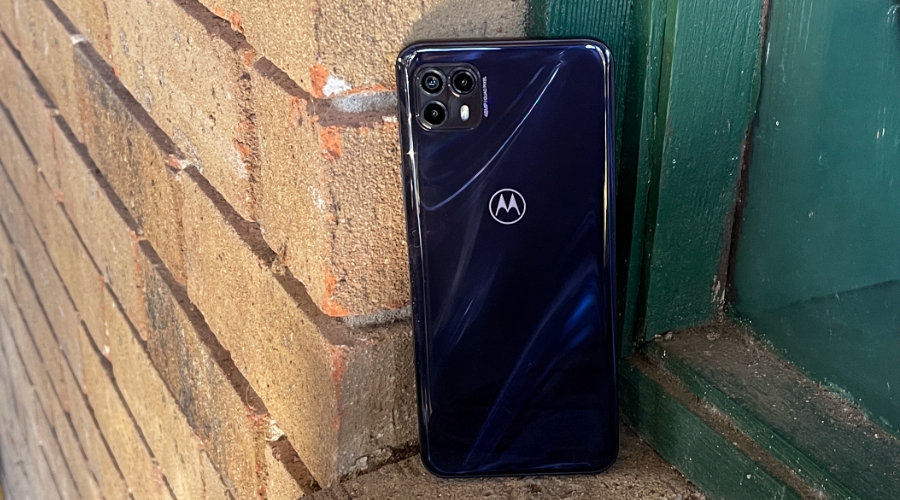
Image: Alex Kidman/Finder
Pricing and availability

Price
The Motorola Moto G50 5G retails in Australia for $399 outright, or on contract terms with Vodafone Australia by the end of September 2021.Where to buy

How we tested:
The Motorola Moto G50 5G was tested over a 1-week period, benchmarking its key features, running battery tests and evaluating its camera capabilities.
Specifications
Display
Camera
Physical Dimensions
Connectivity
Power, storage and battery
Device features
Images: Alex Kidman
More Finder reviews
-
Why I keep coming back to Google’s Pixel Watch 4 (you might disagree)
17 Dec 2025 |
-
The Pixel 10 is the perfect phone for everyday use – here’s why
16 Dec 2025 |
-
Apple iPhone 17 review – Is it the phone of the year?
16 Dec 2025 |
-
iPhone Air review – It’s not what I expected
12 Dec 2025 |
-
iPhone 17 Pro and Pro Max review – At their peak
30 Oct 2025 |
Sources
Your reviews
Alex Finder
Senior editor
You are about to post a question on finder.com.au:
- Do not enter personal information (eg. surname, phone number, bank details) as your question will be made public
- finder.com.au is a financial comparison and information service, not a bank or product provider
- We cannot provide you with personal advice or recommendations
- Your answer might already be waiting – check previous questions below to see if yours has already been asked
Finder only provides general advice and factual information, so consider your own circumstances, or seek advice before you decide to act on our content. By submitting a question, you're accepting our Terms Of Service and Finder Group Privacy & Cookies Policy.
This site is protected by reCAPTCHA and the Privacy Policy and Terms of Service apply.

